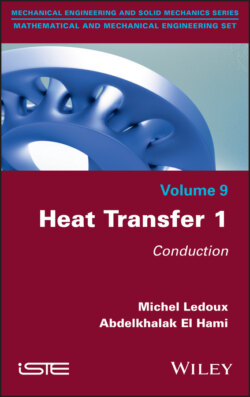Читать книгу Heat Transfer 1 - Bouchaib Radi, Ghias Kharmanda, Michel Ledoux - Страница 11
I.2. Introduction
ОглавлениеThermal science is to thermodynamics as decree means is to law. It answers the following question – which all good leaders must (or should) ask themselves whenever they have an “idea”: “How would this work in practice?”.
In a way, thermal science “implements” thermodynamics, of which it is a branch.
A thermodynamics specialist is a kind of energy economist. Applying the first principle, they create a “grocery store”. With the second principle, they talk about the quality of their products. I add or remove heat from a source or work from a system. And the temperature, among other things, defines the quality of the energy for me.
But by what means do I take or do I give? Even calculations of elementary reversible transformations do not tell us by what process heat passes from a source to a system.
Thermal science specifies how, but “evacuates” the work. If in a given problem related to, for example, a convector where electrical energy (therefore in the “work” category) appears, it is immediately dissipated into heat by the Joule effect.
Three heat transfer modes can be identified: conduction and radiation – which can be seen separately, although they are often paired up – and convection, which is by nature an interaction of fluid mechanics and conduction.
Dividing the study of thermal science into three volumes is the result of logic. Presenting this work in three volumes is somewhat arbitrary; in our opinion, however, this split was necessary in order to keep the volumes in the collection a reasonable size.
The first volume, entitled Heat Transfer 1, is dedicated to “classic” approaches (analytical treatment) to conduction, which will be of greater interest to readers who are looking for “simple” prediction methods.
The second volume, entitled Heat Transfer 2, is dedicated to “classic” approaches (analytical treatment) of radiation, and assembles digital approaches of these various transfer modes. It is aimed at engineers or researchers who want to resolve more complex problems.
The third volume, entitled Heat Transfer 3, is focused on convection transfers. As we have already pointed out, all of these transport operations are rarely pure and lead to problems that involve three inter-connecting transfer modes, conduction, convection and radiation.
Before our readers immerse themselves in a text that, despite our best efforts, remains intellectually demanding, we propose a short text that is a little lighter.
